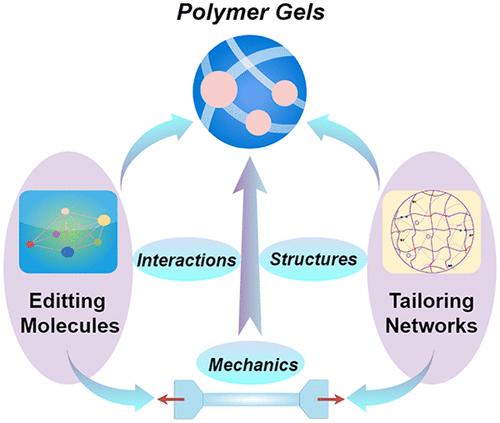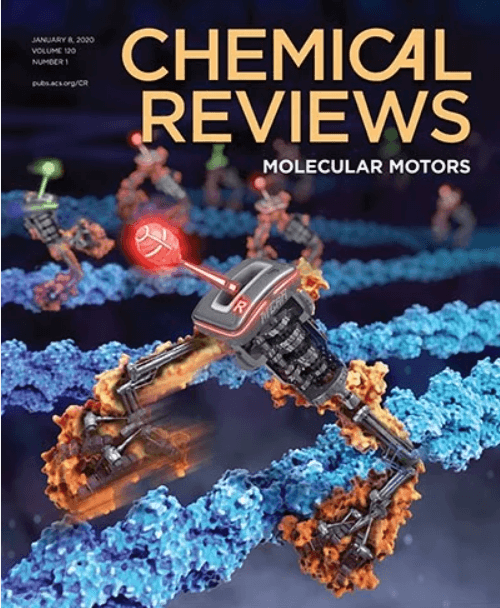聚合物凝胶的机械调节
IF 55.8
1区 化学
Q1 CHEMISTRY, MULTIDISCIPLINARY
引用次数: 0
摘要
聚合物凝胶的机械特性可用于生物医学工程、柔性生物电子学、仿生致动器和能量收集器等领域的新兴设备和机器。人们一直在探索如何将网络结构和相互作用耦合起来,以调节聚合物凝胶的支持性力学特性;然而,该领域仍然缺乏将力学与分子和结构层面的相互作用力相关联的系统综述。本综述重点介绍聚合物凝胶力学的分子工程和结构工程,以及对力学调节的全面机理理解。分子工程改变分子结构,在分子水平上操纵功能基团/分子,引入各种相互作用和永久或可逆动态键作为耗散能。分子工程通常使用单体、交联剂、链和其他添加剂。结构工程利用浇铸方法、溶剂相调节、机械化学、大分子化学反应和生物制造技术来构建和定制拓扑网络结构或异质模量成分。我们认为,分子工程与结构工程的完美结合可为这一新兴领域提供全新的视角,拓展令人兴奋的新视野。本综述还总结了具有优异机械性能的聚合物凝胶的最新代表性应用。此外,还从简明摘要、机械机理、生物制造方法、升级应用和协同方法五个方面提供了结论和展望。本文章由计算机程序翻译,如有差异,请以英文原文为准。

Mechanical Regulation of Polymer Gels
The mechanical properties of polymer gels devote to emerging devices and machines in fields such as biomedical engineering, flexible bioelectronics, biomimetic actuators, and energy harvesters. Coupling network architectures and interactions has been explored to regulate supportive mechanical characteristics of polymer gels; however, systematic reviews correlating mechanics to interaction forces at the molecular and structural levels remain absent in the field. This review highlights the molecular engineering and structural engineering of polymer gel mechanics and a comprehensive mechanistic understanding of mechanical regulation. Molecular engineering alters molecular architecture and manipulates functional groups/moieties at the molecular level, introducing various interactions and permanent or reversible dynamic bonds as the dissipative energy. Molecular engineering usually uses monomers, cross-linkers, chains, and other additives. Structural engineering utilizes casting methods, solvent phase regulation, mechanochemistry, macromolecule chemical reactions, and biomanufacturing technology to construct and tailor the topological network structures, or heterogeneous modulus compositions. We envision that the perfect combination of molecular and structural engineering may provide a fresh view to extend exciting new perspectives of this burgeoning field. This review also summarizes recent representative applications of polymer gels with excellent mechanical properties. Conclusions and perspectives are also provided from five aspects of concise summary, mechanical mechanism, biofabrication methods, upgraded applications, and synergistic methodology.
求助全文
通过发布文献求助,成功后即可免费获取论文全文。
去求助
来源期刊

Chemical Reviews
化学-化学综合
CiteScore
106.00
自引率
1.10%
发文量
278
审稿时长
4.3 months
期刊介绍:
Chemical Reviews is a highly regarded and highest-ranked journal covering the general topic of chemistry. Its mission is to provide comprehensive, authoritative, critical, and readable reviews of important recent research in organic, inorganic, physical, analytical, theoretical, and biological chemistry.
Since 1985, Chemical Reviews has also published periodic thematic issues that focus on a single theme or direction of emerging research.
 求助内容:
求助内容: 应助结果提醒方式:
应助结果提醒方式:


